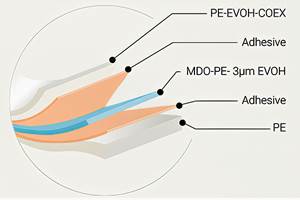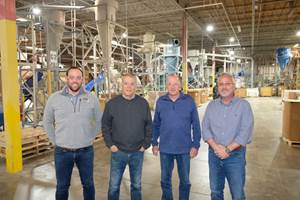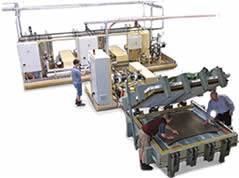SPE Automotive Awards Highlight Materials and Processing Advances
What’s new in plastics on cars?
What’s new in plastics on cars? Some of the answers are nanocomposite alloys, natural-fiber composites, Class A carbon-fiber composites, lots of in-mold decorating, and a surprising amount of expandable polyolefin bead foams. Those were among the trends evident in the finalists for the 35th Innovation Awards, presented in November by the SPE Automotive Div. Winners in 11 categories plus a Grand Award were chosen by a panel of judges that included this editor. While some of the finalists and award winners exemplify creative product design, this article focuses on a handful that reflect newsworthy advances in materials or processing. (For a summary of all this year’s awards, see Learn More box.)
Novel PP/metal hybrid
A lower-cost approach to plastic/metal “hybrids” won the award for Process/Assembly/Enabling Technologies. Recent years have seen the emergence of hybrid structural members produced by overmolding glass-filled nylon onto stamped metal. But the front-end carrier for the 2005 Volkswagen Polo A05GP uses a less expensive combination of 30% long-glass polypropylene adhesively bonded to E-coated steel. This achieves high stiffness with light weight via closed box-beam sections that cannot be produced by overmolding.
What makes that possible is Betamate LESA adhesive from Dow Automotive, said to be the first adhesive for polyolefins that requires no primer or surface treatment. This two-component acrylic cures at room temperature. Dow also supplied the Inspire LGF-PP compound. The molder, assembler, and moldmaker was Grupo Simoldes of Oliveira de Azemeis, Portugal.
More in-mold decorating
This year, in-mold decorating (IMD) was represented among a half-dozen awards finalists:
- Leather-like instrument- and door-panel skins are produced by spraying a PUR soft-touch paint into the mold and then immediately closing the mold and injecting PUR foam. They are made by Faurecia Interior Systems in Germany for Mercedes-Benz.
- Visteon Corp.’s Carplastic Plant in Monterrey, Mexico, thermoforms a TPO skin for the Honda Civic I.P. and injects a PP substrate directly behind it.
- A panorama roof module on GM’s Opel Zafira is made by Webasto AG, Stockdorf, Germany, using preformed Lexan SLX weatherable, glossy film from GE Plastics, backed up by long-glass reinforced PUR foam.
- Rocker panels for the 2006 Buick Lucerne and a fascia applique for the Jeep Liberty are said to represent the first mass-production use of thermoformed “thick-sheet” paint film with Class A finish for exterior trim panels. Both parts are formed by Durakon Industries, Lapeer, Mich., from TPO sheet laminated to Soliant dry-paint films. Production volumes are 250,000 rockers and 50,000 appliques.
- A thermoformed TPO outer skin with a Soliant paint film also decorates the Class A midbox door on the 2005 General Motors Colorado/Canyon pickup. It was formed by Carlisle Engineered Products, Livonia, Mich.
- Johnson Controls Inc.’s Automotive Group, Holland, Mich., uses its “Partial Mold Behind” technique to injection mold a one-piece interior door-trim panel for the 2006 Chevy Impala. Pieces of different soft-vinyl cover stocks are welded together as one piece, then robotically loaded into a mold and backed up by low-pressure injection-compression molding with sequential valve gating. This method eliminates glue and accompanying VOCs. Multiple colors and textures can be incorporated cost-effectively in one trim panel.
- In-mold carpet lamination is one clever feature of the blow molded lid for an optional rear cargo-management system on the 2005 Ford Escape, Mariner, and Tribute SUVs. It is blow molded of glass-reinforced PP by Lear Corp. in Fremont, Ohio, using Lear’s patented internal-rib process. This technique, which has been used for three to four years to mold package shelves and load floors, involves a partial preblow while movable metal blades push into one side of the parison, creating pairs of ribs that fuse with the other parison wall at a single point. Then the blades withdraw and final blowing seals the two ribs into one thicker rib.
Large exterior parts
Winner of both the Body Exterior category and the Grand Award was the SMC in-bed trunk of the 2006 Honda Ridgeline pickup. Molded by Meridian Automotive Systems in Huntington, Ind., the 4 x 5 ft, 10-piece, steel-reinforced bed of low-density SMC and high-strength SMC holds 1100 lb of payload. Its 20-in.-deep well provides 8.5 cu ft of lockable, weather-tight stowage and room for a spare-tire tray.
Carbon-fiber composites continue to make headway in automotive. Class A fenders of carbon fiber/epoxy for the 2006 Corvette Z06 are the highest-volume application yet (7000 cars/yr) for such a composite in an exterior body panel. The parts weigh 3.5 lb each, vs. 9.5 lb for the RRIM fenders they replace. Average thickness is 1.2 mm vs. 3.5 mm for RRIM. Material cost per fender is around three times that of RRIM, but savings in tooling, scrap, and subassembly (by integrating brackets and eliminating an SMC support piece) make overall part cost competitive.
The parts are autoclave molded by Vermont Composites, Bennington, Vt. Unidirectional carbon tapes reportedly provide a better surface than woven fabric and cost half as much. Toray’s G83 epoxy “snap cures” in less than 10 min at 290 to 300 F. Tooling designed for maximum airflow in the autoclave helped cut overall cycle time to 85 min from the 120 min it took to mold the carbon-fiber/epoxy hood on the 2005 Corvette. The next goal is to bring cycles under 1 hr.
Bead foam uses expand
Three finalist entries involved steam-chest molded expandable polyolefin bead foams. One was the seat “halo” for the 2006 Chevrolet Impala. The halo is the comfort ring that surrounds the rear seat area and incorporates the headrest and bolsters in a single part. While PUR foam would require a wire for support, this is eliminated with Arpex crosslinked expandable polyethylene (xEPE) bead. JSP International produces and sells the bead and also molds the parts for Lear Corp., Southfield, Mich. Arpex is reportedly more durable and weighs less than PUR foam, which couldn’t mold this part in one piece without risk of tearing. Also, xEPE molds faster and allows a very thin section—6 to 7 mm—in the transition area between the headrests.
JSP also molded the flip-up bench seat for the same seat assembly. This part used JSP’s Arpro expandable PP (EPP) bead foam with an insert-molded steel hinge plate and a covering pad of PUR foam. Use of EPP produces a much thinner seat overall, thus leaving room for a storage area underneath.
Arpro EPP also served as the ring support structure for the optional rear cargo-management system on the 2005 Ford Escape/Mariner/Tribute SUVs. SCA Packaging North America, Owosso, Mich., molded it for Lear.
Materials innovations
A finalist in the Materials category was a nanocomposite of polypropylene and polystyrene in which the nanoclay acts as the compatibilizer. This highly scratch-resistant material was developed by German compounder Putsch GmbH using organically treated Nanofil clay from Sud-Chemie of Germany (U.S. office in Louisville, Ky.) The Elan XP nano-alloy with molded-in color was used in the heater vent for the 2005 Audi A3. Another three interior applications are on 2006 vehicles.
Putsch compounds the nanoclay with the PP and then adds PS, which “hides” from the incompatible PP in the spaces between the partially exfoliated layers of clay. The result is said to be low gloss, high flow, low shrinkage, and impact strength comparable to ABS. Parts are warp-free and much lower in density than mineral-filled PP.
The winner in the Materials category was Basell’s Hostacom CA199P, said to be the first molded-in-color reactor TPO with low-temperature toughness suitable for side airbag covers. Made with Basell’s Catalloy in-reactor alloying technology, the material contains 70% rubber and has a brittle temperature of -60 F. It is used in Buick Lucerne airbag covers from Autoliv, Auburn Hills, Mich.
Low-temperature toughness is also a critical attribute of GE Plastics’ Lexan EXL 1414H polycarbonate-silicone copolymer used in the active airbag cover for the 2006 Cadillac DTS and Buick Lucerne. This resin is used by Lear to mold the seamless airbag door, which is integrated into the instrument panel with living hinges.
The material remains fully ductile (no fragmentation) during airbag deployment at -40 C. Lexan EXL is significantly tougher at low temperatures than PC/ABS, has higher chemical resistance than plain PC, and boasts high flow and very high knit-line strength.
The winner in the Environmental category is de scribed as “the world’s first large-scale use (40 tons/yr) of natural-fiber reinforcement in an exterior application.” The spare-wheel cover on the 2005 Mercedes-Benz A-Class mini-car is compression molded of PP and abaca fiber, derived from a relative of the banana plant in the Philippines. The part was molded by Rieter Automotive Systems, Winterthur, Switzerland. (See Learn More for details.)
Another Environmental finalist is said to be the first use of 100% recycled material in a high-performance powertrain application with critical physical and safety demands. For that reason, it is expected to broaden the acceptance of recycled plastics in auto parts. The gear-shifter module for the 2005 Saturn Ion and Vue and Chevrolet Equinox and Malibu is 33% glass-filled nylon 66 recycled from post-industrial fiber scrap by A. Schulman, Inc. The shifter is molded and assembled by SL America, Clinton, Tenn., for more than 500,000 cars/yr, utilizing 700,000 lb of waste nylon. GM saves 38% on material cost with no tool or part-design changes to convert from virgin resin. Processing and surface quality are said to be even better with the recycled material.
A new area of automotive engineering is pedestrian impact protection. AKsys GmbH of Worms, Germany, and Gastonia, N.C., developed a special beam behind the front fascia that is compression molded from PP glass-mat/thermoplastic (GMT) sheet. AKsys obtained the desired level of stiffness by stacking combinations of Quadrant’s chopped-glass GMT and its woven-fabric GMTex sheets.
Passenger safety was the goal behind General Motors’ use of high-density rigid PUR foam to fill rocker panels on the 2006 Cadillac DTS and Buick Lucerne. This is said to be the first high-volume application of this sort. RIM is used to inject 10.5 lb of Dow’s Betafoam per rocker with the aid of infrared fill detection. Reduced steel mass saves 11 lb/car. Dow Automotive developed new polyol chemistry that provides fast reaction, low exotherm, and good mechanical properties.
Related Content
Recycling Terminology Can Be a Minefield, So We Should Tread Lightly
Loose propagation of terms like “recyclable” and “compostable” has already brought down government regulations on labeling. The plastics and packaging industries should take that to heart with other recycle-related language. Like “monomaterial” for example.
Read MoreEvolving Opportunities for Ambitious Plastics Recycler
St. Joseph Plastics grew from a simple grinding operation and now pursues growing markets in recycled PP, food-grade recycled materials, and customized post-industrial and post-consumer compounds.
Read MoreLooking to Run PCR on a Single Screw? Here’s What to Keep in Mind
Just drop it in and mix it up? Sorry, there’s a lot more to it than that. Here is some of what you need to consider.
Read MoreIgus Unveils World’s “First” Urban Bike Made from Recycled Plastic
The engineering concept and key components for bikes made of recycled plastic are available to all bike manufacturers.
Read MoreRead Next
Composites: New Rapid Molding Technologies and Unusual Reinforcements at Paris JEC Show
New molding technologies seen at the JEC Composites Show in Paris in April promise dramatically faster cycles than are achievable with autoclaves or RTM. One novel technique rapidly heats and cools a thin tool by "floating" it on a flexible bladder—similar to a water bed—that is flooded with heat-transfer fluid.
Read MoreNew Technologies for Automotive TP Composites and Acoustic Laminates
Rieter Automotive Systems, a global producer of automotive trim components and a leader in acoustic systems, unveiled several new technologies last June at its 17th biennial acoustics conference for customers at its headquarters in Winterthur, Switzerland.
Read MoreLead the Conversation, Change the Conversation
Coverage of single-use plastics can be both misleading and demoralizing. Here are 10 tips for changing the perception of the plastics industry at your company and in your community.
Read More


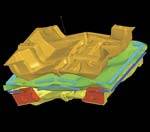

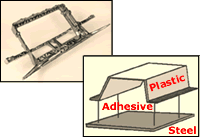


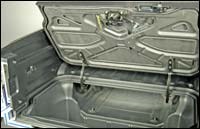












.png;maxWidth=300;quality=90)






